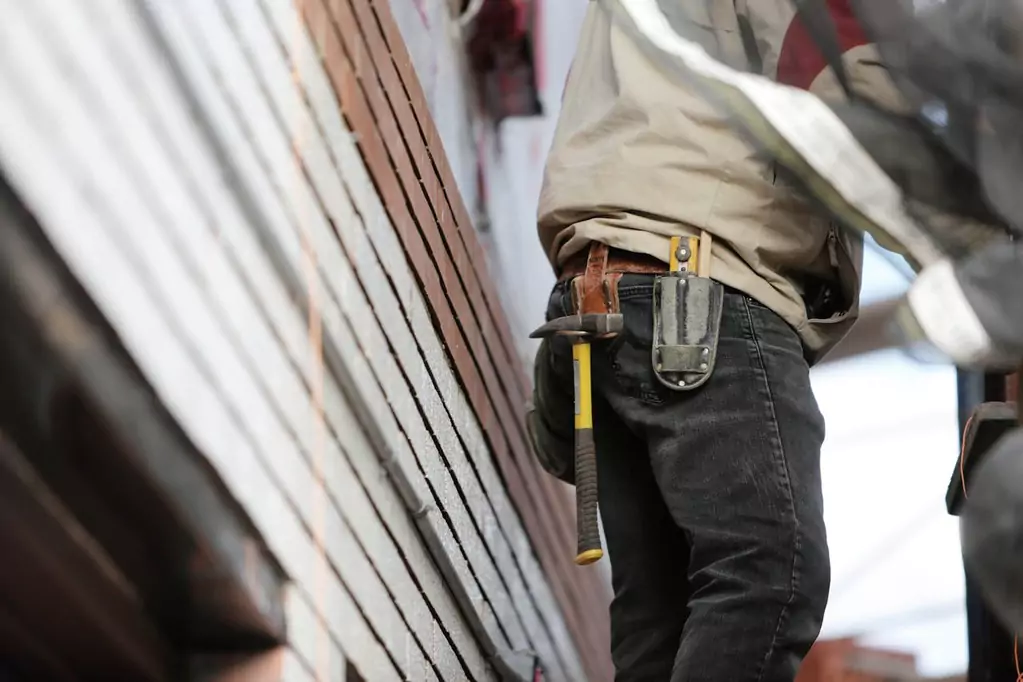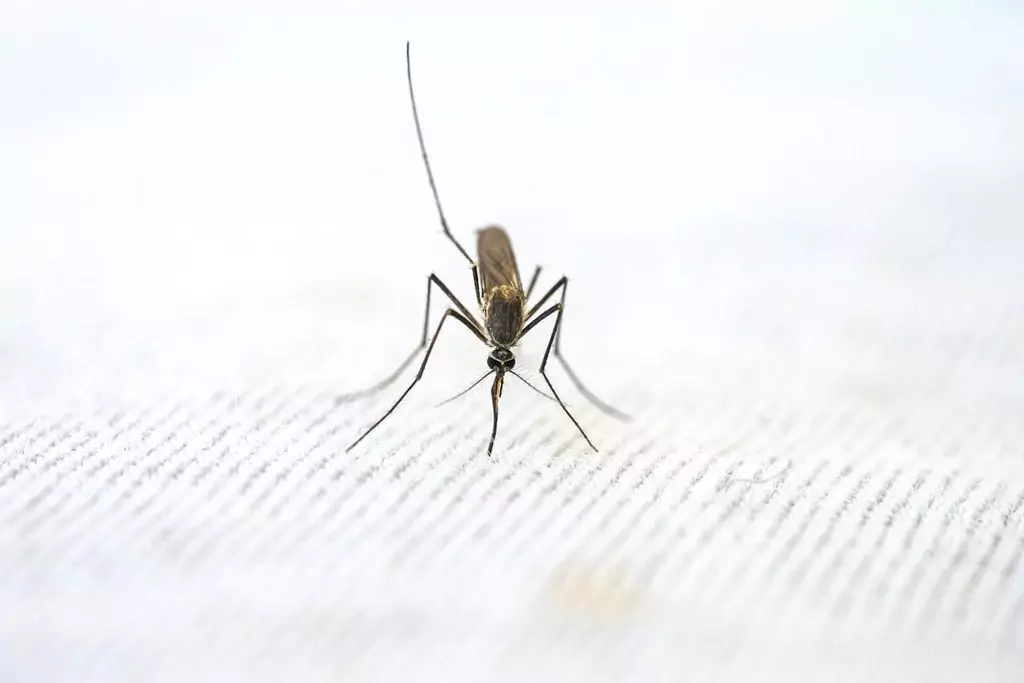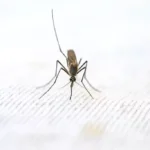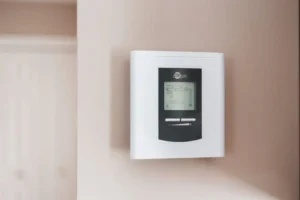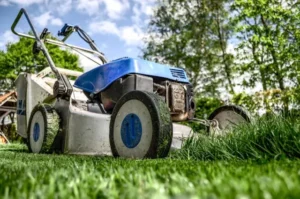Now Reading: Will My Air Conditioner Kill My Plants?
- 01
Will My Air Conditioner Kill My Plants?
- Home
- Home Appliances
- Will My Air Conditioner Kill My Plants?
Will My Air Conditioner Kill My Plants?
![]() Anne MaddisonClimate Control, Home AppliancesJuly 27, 2025173 Views
Anne MaddisonClimate Control, Home AppliancesJuly 27, 2025173 Views
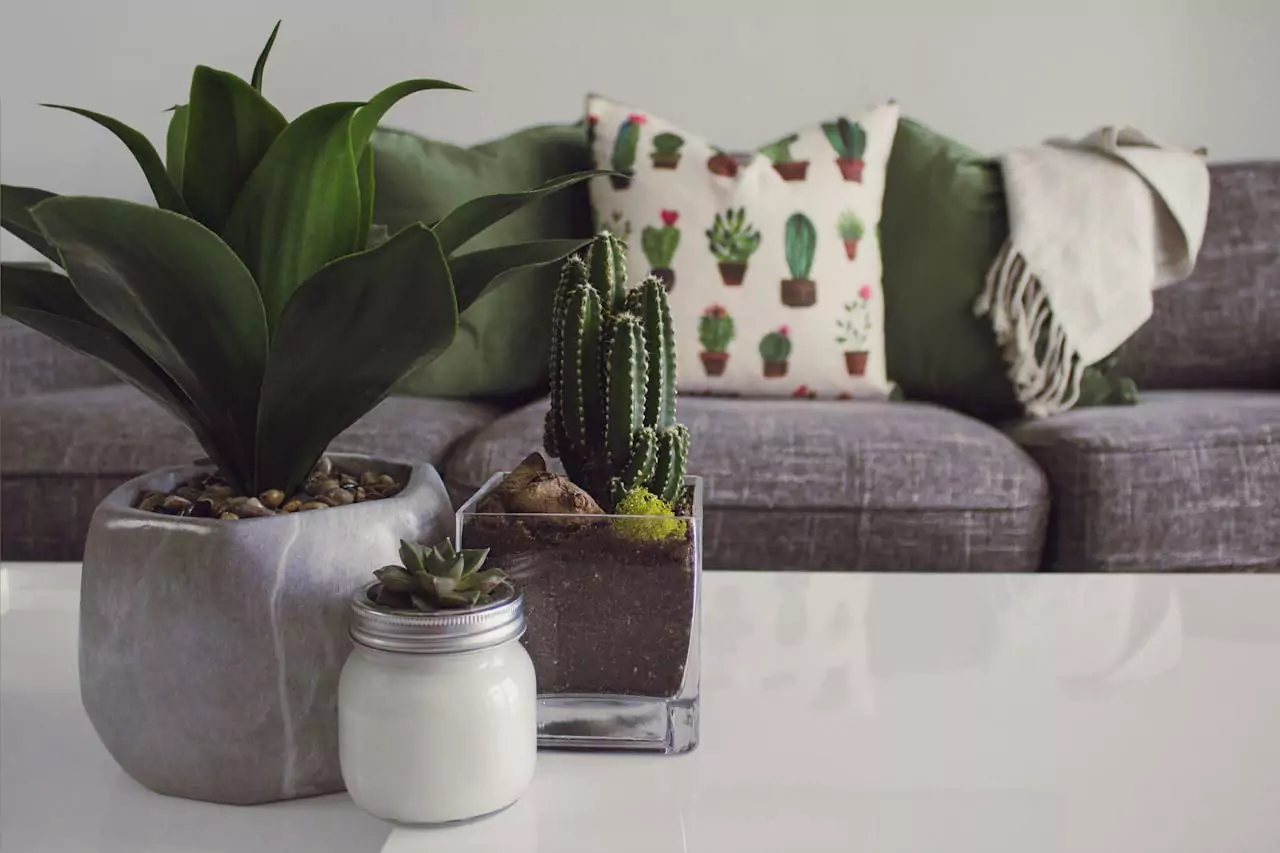
If you have houseplants and use an air conditioner at home, you might be worried that the cool air is bad for them. The good news is this: your air conditioner will not directly kill your plants. But it can make it harder for them to stay healthy if you’re not careful.
What causes problems isn’t the air conditioner itself, but how it changes the air in your home. Cold air, dry air, and strong airflow can all stress your plants. These things can lead to dry leaves, slow growth, or even leaf drop if not managed properly.
In this article, you’ll learn:
- What happens to plants when they live in air-conditioned homes
- Which plants are more sensitive to cool or dry air
- Signs your plant is struggling
- Simple ways to protect your plants
- Good plant choices for rooms with air conditioning
By the end, you’ll know how to keep your home cool and your plants happy at the same time.
How Your Air Conditioner Affects Indoor Plants at Home
When you turn on your air conditioner, your home becomes cooler and more comfortable. But this change in temperature and airflow can affect your plants. Some plants, especially tropical ones, are used to warm and humid places. The cool and dry air from your AC might make it harder for them to grow well.
Here are four ways your air conditioner can affect your plants and what to look out for.
Cold Air and Chilly Drafts
Most houseplants come from warm places like jungles and rainforests. These plants are not used to cold air blowing on them. When your AC sends out cool air, it can create chilly drafts that hit the leaves and the soil.
If your plant is placed near a vent or right under the cool air, it may start to show signs of stress.
You might notice things like:
- Brown or black spots on the leaves
- Leaves curling at the edges
- Some leaves falling off
Cold air can also slow down how the plant grows. The plant might start to look dull or weak. Even short blasts of cold air each day can cause damage over time.
💡 Tip: Keep your plants away from spots where cold air blows directly on them. A few feet to the side is often enough.
Dry Air from Your AC
Air conditioners cool the air but also remove moisture from it. This makes the air inside your home feel drier. You may not feel the difference, but your plants can.
Some houseplants, like ferns, calatheas, and peace lilies, need more moisture in the air to stay healthy. If the air is too dry, their leaves can:
- Turn brown at the tips
- Feel crispy to the touch
- Start drooping even if the soil is still damp
Dry air can also cause the soil to dry out faster. You might feel like you need to water your plants more often. But watering too much can lead to root rot, which harms the plant even more.
💡 Tip: If your skin feels dry in a room with AC, your plants are likely feeling dry too.
Direct Airflow Stress
Plants do not like strong air blowing on them all the time. Even if the air is not too cold, constant movement can dry them out.
If your air conditioner blows air right at a plant, the leaves can lose moisture faster than the roots can replace it. This makes it harder for the plant to stay healthy, even if you are watering it on schedule. You might see signs like:
- Drooping leaves, even when the soil feels moist
- Slower growth than usual
- A tired or dried-out look
Some plants with thin or soft leaves, like maidenhair ferns or spider plants, are more sensitive to this. They may react more quickly to too much airflow.
💡 Tip: If your eyes or lips feel dry near the AC, your plant might be having a similar reaction.
Temperature Swings
Plants like stable temperatures. But when your air conditioner turns on and off during the day, the room can get cold, then warm, then cold again. These sudden changes can confuse your plant’s system.
Most houseplants grow best in temperatures between 65°F and 75°F (18°C–24°C). If the temperature keeps changing too quickly, plants may:
- Grow slower
- Drop leaves
- Stop making new leaves altogether
Some may even think it’s time to go into rest mode (like they do in winter), even if it’s summer.
💡 Tip: Try using your AC’s “auto” mode so the room stays at a steady temperature.
Sensitive Houseplants That Struggle in Air-Conditioned Homes
Some plants are more sensitive than others. If you keep your AC on often, these plants may have a harder time staying healthy. They like warm, moist air and steady temperatures. Dry or cold air can make their leaves dry out, curl, or fall off.
Here are some plants that often struggle in air-conditioned homes:
Calathea
Calatheas have colorful patterns and soft leaves. They don’t like dry air or sudden cold. Their leaves may curl or get brown edges when the air gets too dry.
Ferns
Ferns love humidity. When the air is dry, their leaves turn brown or crispy. They also don’t do well if cold air hits them often.
Orchids
Orchids are very picky. They need steady warmth and some moisture in the air. Too much dry air or cold air can stop them from blooming.
Fiddle Leaf Fig
This popular plant is sensitive to both temperature changes and dry air. Its large leaves may drop if the room gets too cold or the air too dry.
Peace Lily
Peace lilies are known for their white blooms. But they get stressed easily in dry or cold air. Their leaves may droop or turn brown at the edges.
Anthurium
These tropical plants have waxy flowers and need humidity to stay healthy. In dry rooms, they may stop blooming and their leaves can dry out.
Prayer Plant
Prayer plants close their leaves at night, but when the air is too dry, they may stop doing that. Their leaves may also curl or fade in color.
💡 Tip: These are common home plants that don’t do well in dry or cold air. If your room has AC running a lot, they may need extra care to stay healthy.
Best Indoor Plants That Survive Well in Air-Conditioned Homes
Not all plants struggle in homes with air conditioning. Some are stronger and can handle cooler temperatures and drier air better than others. These plants are great choices if your home stays cool most of the time or if you’re still learning how to care for indoor plants.
Here are some of the best ones to try:
Snake Plant
Also known as Mother-in-Law’s Tongue, the snake plant is one of the easiest plants to grow indoors. It doesn’t mind dry air or low light, and it can go days without water. It’s tough and can handle the changing temperatures that come from AC.
ZZ Plant
The ZZ plant is another strong option. It has thick, waxy leaves that hold moisture well, so dry air won’t hurt it as much. It also doesn’t need much light, making it great for indoor corners and cool rooms.
Pothos
Pothos is renowned for its heart-shaped leaves and trailing tendrils. It thrives in a variety of indoor environments. High humidity is not necessary for it to grow, and it continues to do so even in cooler air. Moreover, it requires very little upkeep.
Spider Plant
This plant is fun to grow because it sends out little “baby” plants you can replant. It handles AC fairly well and even helps clean the air. Just make sure it’s not right in front of a cold draft.
Rubber Plant
Rubber plants have thick, glossy leaves and can handle drier air better than many other tropical plants. They like some sunlight and don’t mind cool indoor spaces, as long as it doesn’t get too cold.
Dracaena
This plant comes in many varieties and is good at adjusting to different indoor environments. It doesn’t like to be overwatered, and it’s okay with average room humidity, even with AC running.
Signs Your Plant Is Stressed by Air Conditioning
Even though plants don’t talk, they show signs when something is wrong. These signs often appear slowly, but they’re your plant’s way of asking for help.
Here are the most common signs that your plant is being affected by cold air, dry air, or strong airflow:
Curled or Crispy Leaf Edges
When the air is too dry or cold, the edges of the leaves may curl up or feel dry and brittle. This means the plant is losing moisture faster than it can take it in. Some leaves may even crack if you touch them.
Yellowing or Falling Leaves
If your plant is losing more leaves than usual, or if they turn yellow before falling, it could be reacting to temperature stress. Cold drafts or dry conditions can make the plant shed leaves to protect itself.
Droopy, Limp Appearance
A plant that looks soft, droopy, or bent over might not just be thirsty. Sometimes, even well-watered plants will droop if they’re sitting in cold or dry air for too long. That’s because their roots and leaves stop working well in tough conditions.
Brown Spots or Tips
A plant that has spots on the middle or ends of its leaves is probably drying up too soon. This occurs when there is too much air blowing on the leaves or when the humidity level in the environment is too low. The plant is experiencing stress if the brown tips spread.
Slower Growth Than Usual
Plants grow more slowly in uncomfortable conditions. If your plant seems stuck, and new leaves take forever to come in, it could be reacting to sudden changes in temperature or lack of moisture in the air.
💡Tip: Look around the room and see if your plant is placed near a vent or directly under where the cold air comes out. If it is, try moving it a few feet away. Even a small change in placement can make a big difference.
How to Protect Your Plants from Air Conditioner Effects at Home
If your air conditioner is keeping you cool, that’s great—but you still want your plants to stay healthy too. The good news is you don’t need to choose between comfort and greenery. Here’s how to protect your indoor plants from the effects of dry air, cold drafts, and changing temperatures in your home.
Keep Plants Away from Direct Airflow
One of the easiest things you can do is move your plants away from spots where the AC blows directly. Frequent exposure to cold air might harm the leaves. Use a vent deflector if you are unable to move your plant too far. In order to prevent the air from continuously blasting your plant, this tool helps divert the airflow away from it.


Choose the Right Spots in Your Home
Avoid placing your plants directly in front of AC vents or in spots that get too cold. Instead, choose areas with stable temperatures and indirect light. East- or north-facing windows are usually ideal, especially for tropical plants. These spots get gentle sunlight, which helps your plants stay warm without overheating or drying out.
If you don’t want to install an air redirection device, you can simply move your plants to a different location. Just shifting them a few feet away from direct airflow can prevent leaf stress, drying, or damage. Look for a cozy corner where air circulates naturally, without blasting your greenery with cold or hot air.
Rotate and Monitor Plants
Air and light move around during the day, so rotating your plants every week or so helps all sides get even exposure. Also, keep an eye on how your plants react to their spot. If you notice dry leaves, drooping, or slow growth, it might be time to adjust where they sit.
Group Plants Together
Plants naturally give off moisture, so when you group several together, they help each other stay more humid. It’s like building a little plant team. Grouping also protects smaller or more sensitive plants from harsh air movement by placing them near taller ones.
Water Smartly
Just because the air is dry doesn’t mean you should water more. Check the soil before watering. Sometimes the top may feel dry, but the bottom still has moisture. Overwatering can cause root rot, which is just as harmful as dry air. Use your finger to test the soil or try a moisture meter if you’re not sure.
Use a Humidifier or Pebble Tray
Air conditioners remove moisture from the air, and that can dry out your plants. A small humidifier in the same room can add moisture back into the air. You can also try a pebble tray. Just place some small rocks in a tray, add water, and set your plant pot on top (without letting it touch the water). As the water evaporates, it adds gentle humidity around the plant. This works especially well for tropical plants like ferns, calatheas, and peace lilies.


How to Create a Plant-Friendly Home with Air Conditioning
You don’t need to choose between staying cool and keeping your plants healthy. With a few smart changes, you can have both. Here’s how to make your home more plant-friendly—even with the air conditioner on:
Raise Pots Off Cold Tile Floors
Cold floors can chill your plant’s roots, especially if your home has tile or stone flooring. Use plant stands, small stools, or trays to lift the pots a few inches. This keeps the roots warmer and helps the plant grow better.
Add Sheer Curtains to Filter Airflow
If your AC blows air near a window, sheer curtains can soften the blast. This protects your plants from strong, direct air while still letting light through. It’s a simple way to block cold drafts without making the room dark.
Use Room Thermometers and Humidity Meters
Knowing the temperature and humidity in your room helps you care for your plants better. Some plants get stressed if the room is too cold or the air is too dry. With a small digital monitor, you’ll know when to adjust the AC or add moisture to the air.
Rearrange Your Setup with the Seasons
What works in summer may not work in winter. Your AC may run more during hot months, and your plants may need to move to different spots depending on how much light and airflow they get. Pay attention to how your plants are doing and don’t be afraid to change their positions.

Final Thoughts
You don’t have to choose between staying cool and having healthy plants. If you understand how air conditioning affects your plants, you can make a few easy changes to help them stay strong. Move them away from vents, add some humidity, and keep an eye on their leaves.
AC and plants can live together just fine. However, if your AC is too big or too small for the room, it can make the temperature shift too much. This can confuse or dry out your plants. Your air conditioner doesn’t have to stop you from being a great plant parent. With smart care, you can enjoy a cool home and happy plants all year round.
Disclaimer: Some links on this page are affiliate links. This means we may earn a small commission at no extra cost to you if you make a purchase through them.
Related Posts
Previous Post
Next Post
Home AppliancesJuly 28, 2025
Can Air Conditioner Make You Sick?
Home InternetJuly 30, 2025
Signs Your Home Router Might Be Hacked
Climate ControlAugust 24, 2025
Are Home Air Conditioner Tune Ups Necessary
Home AppliancesAugust 23, 2025
Can Air Conditioning at Home Trigger Asthma?
- 03
Home AppliancesJuly 28, 2025
Can Air Conditioner Make You Sick?
- 04
Home InternetJuly 30, 2025
Signs Your Home Router Might Be Hacked


